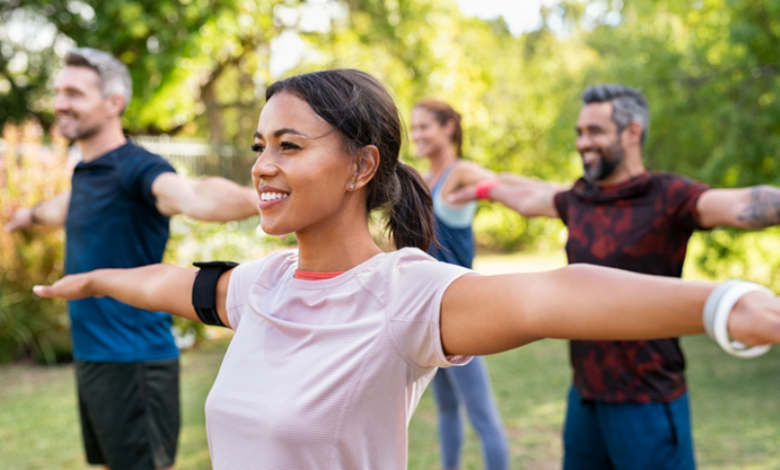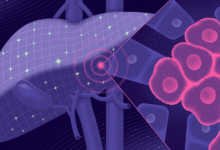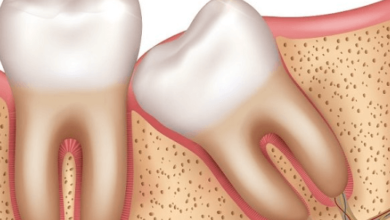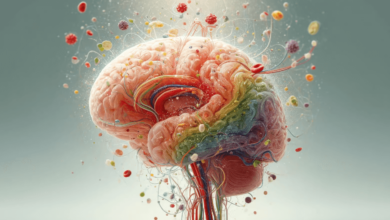The Connection Between Physical Activity and Youth Mental Health

In today’s fast-paced world, the well-being of young people is a paramount concern. While academic achievements and social development often take center stage, the critical role of mental health cannot be overstated. A silent epidemic of anxiety, depression, and stress is affecting a growing number of adolescents and young adults. As parents, educators, and community leaders, we are constantly seeking effective strategies to support their emotional resilience. One powerful, yet often underutilized, tool in this endeavor is physical activity. The profound connection between a healthy body and a healthy mind is not just anecdotal; it’s backed by a vast body of scientific evidence, offering a beacon of hope for improving youth mental health.
The Mental Health Landscape for Today’s Youth
The statistics paint a sobering picture. According to the Centers for Disease Control and Prevention (CDC), in 2021, more than one-third (37%) of high school students reported experiencing poor mental health during the past 30 days, and 17% had seriously considered attempting suicide. These figures highlight an urgent need for comprehensive approaches to mental well-being. Factors such as academic pressure, social media influence, family dynamics, and global uncertainties all contribute to the complex tapestry of challenges young people face. Addressing these issues requires multi-faceted interventions, and understanding the role of physical activity is a crucial piece of that puzzle. For some, specialized support from a dedicated youth mental health academy becomes essential, but for many, incorporating regular movement can be a significant preventative and supportive measure.
How Movement Boosts Mood and Brain Power
The link between physical activity and mental health is deeply rooted in neurobiology. When young people engage in exercise, their bodies release a cascade of beneficial chemicals:
- Endorphins: Often dubbed “feel-good” hormones, endorphins are natural painkillers and mood elevators. They can reduce feelings of stress and anxiety, replacing them with a sense of euphoria and well-being.
- Neurotransmitters: Exercise stimulates the production and regulation of key neurotransmitters like serotonin, dopamine, and norepinephrine. These chemicals play vital roles in regulating mood, sleep, appetite, and cognitive function. Imbalances in these neurotransmitters are frequently associated with depression and anxiety.
- Brain-Derived Neurotrophic Factor (BDNF): Often called “Miracle-Gro for the brain,” BDNF promotes the growth of new brain cells and strengthens existing ones. This is particularly important for areas of the brain involved in memory, learning, and emotional regulation, such as the hippocampus and prefrontal cortex.
Beyond the chemical changes, physical activity provides a healthy outlet for pent-up energy and frustration. It offers a sense of accomplishment, improves self-esteem, and can enhance cognitive functions like focus and problem-solving, which are often impaired by mental health struggles.
The Social and Emotional Benefits of Active Lifestyles
The advantages of physical activity extend beyond individual neurochemical responses. Engaging in sports or group fitness activities also fosters crucial social and emotional development:
Building Self-Esteem and Confidence
Mastering new skills, improving physical capabilities, and achieving fitness goals can significantly boost a young person’s self-esteem. This newfound confidence can then translate into other areas of their lives, from academic performance to social interactions. The sense of accomplishment derived from physical challenges is a powerful antidote to feelings of inadequacy.
Developing Social Skills and Connection
Team sports and group exercise provide opportunities for young people to interact with peers, learn teamwork, communication, and leadership skills. These social connections are vital for combating feelings of loneliness and isolation, which are significant risk factors for mental health issues. Being part of a supportive group can create a sense of belonging and reduce stress.
Stress Reduction and Resilience
Physical activity acts as a natural stress reliever. The physical exertion helps to dissipate the physiological symptoms of stress, such as muscle tension and increased heart rate. Moreover, regular exercise can improve a young person’s ability to cope with future stressors, building psychological resilience. It teaches them discipline, perseverance, and the ability to push through challenges.
Improved Sleep Quality
Sleep disturbances are a common symptom and contributor to mental health problems in youth. Regular physical activity, particularly moderate-to-vigorous exercise, can significantly improve sleep quality and duration. Better sleep, in turn, has a profound positive impact on mood, cognitive function, and overall mental well-being.
See also: Soil Matters: Essential Practices for Enhancing Soil Health
Actionable Tips for Integrating Physical Activity
Encouraging young people to embrace physical activity doesn’t require them to become elite athletes. The key is finding activities they enjoy and making movement a regular part of their routine.
- Make it Fun and Varied: Offer a range of activities – team sports, individual pursuits like cycling or swimming, dance, martial arts, or even active video games. The more enjoyable it is, the more likely they are to stick with it.
- Lead by Example: Parents and guardians who are physically active themselves are more likely to have active children. Encourage family walks, bike rides, or active games.
- Limit Screen Time: While technology has its place, excessive screen time often displaces physical activity. Set reasonable limits and encourage breaks for movement.
- Incorporate Movement into Daily Routines: Simple changes like walking or biking to school, taking the stairs instead of the elevator, or doing short exercise breaks during homework can add up.
- Encourage Outdoor Play: Spending time in nature has additional mental health benefits, including reduced stress and improved mood.
- Seek Professional Guidance: For young people struggling with significant mental health challenges, physical activity can be a powerful adjunct to therapy and other interventions. A comprehensive approach, sometimes including the structured environment of a youth mental health academy, often yields the best outcomes.
Conclusion
The profound link between physical activity and youth mental health is undeniable. By understanding the neurobiological, social, and emotional benefits of movement, we can empower young people with a vital tool for building resilience, managing stress, and fostering overall well-being. Integrating regular physical activity into their lives is not just about physical fitness; it’s about nurturing their minds, equipping them with coping mechanisms, and helping them thrive in an increasingly complex world. Let us champion active lifestyles as a cornerstone of comprehensive mental health support for the next generation.






